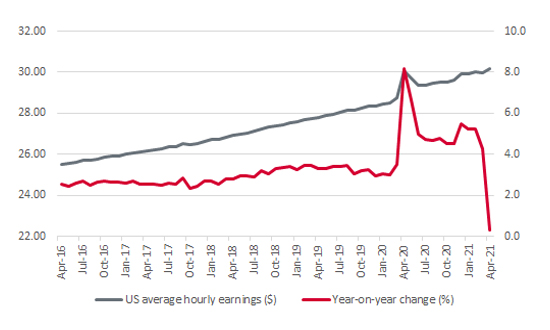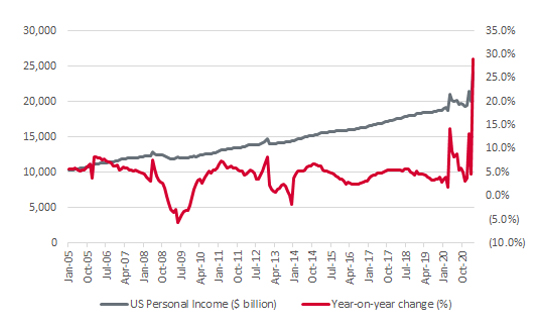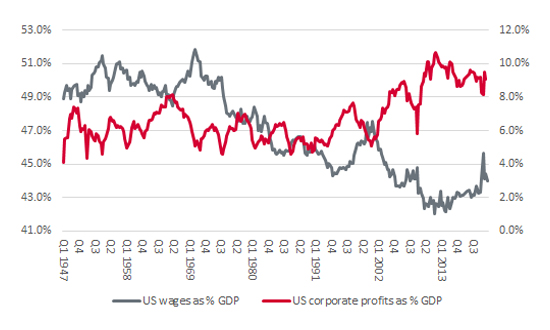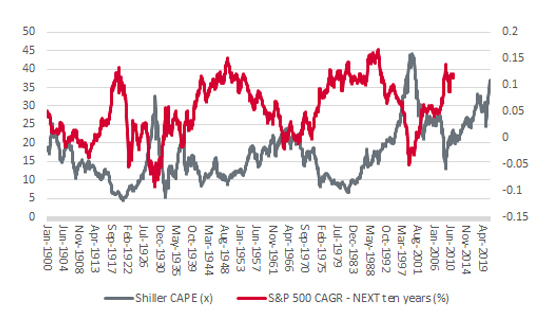


The news that Amazon is looking to hire 75,000 more workers in the US and Canada is eye-catching enough, even for a firm that employs 1.3 million around the globe, according to its website. But it is the offer of an average of a starting salary of $17 an hour – plus a potential signing-on bonus of $1,000, and benefits such as health and dental care – that really stand out. While the average American worker now earns around $30 an hour, this proposed Amazon package easily exceeds the current US federal minimum wage of $7.25 and therefore potentially informs the case that wages are going up.
If so, investors need to consider three potential implications.
“The US downturn of 2020 looks unusual in many respects, but one of them is how wages look relatively unaffected, despite a surge in unemployment.”
The US downturn of 2020 looks unusual in many respects, but one of them is how wages look relatively unaffected, despite a surge in unemployment. Even now the jobless rate stands at 6.1% according to the headline U3 rate and 10.4% on the basis of the U6, which includes discouraged and part-time workers who would like full-time jobs, as well as those who are seeking a new post. Wage growth looks to be cooling but only after an unusual spike last year and pay is still marching higher.
US wages are rising even as unemployment remains high

Source: FRED – St. Louis Federal Reserve database, US Bureau for Labor Statistics
“Despite the virus, the economic slump and an initial spike in the jobless rate, US personal income hardly missed a beat and has since shot higher. It took two years for US personal income to recovery after the Great Financial Crisis. This time it took eight months.”
This may be a legacy effect of the Trump administration’s desire to bring jobs back onshore in the US and reverse outsourcing and globalisation. It could also be the result of welfare and labour support programmes, as well as stimulus cheques, during the pandemic. Despite the virus, the economic slump and an initial spike in the jobless rate, US personal income hardly missed a beat and has since shot higher. It took two years for US personal income to recover after the Great Financial Crisis. This time it took eight months. Are companies therefore finding themselves having to offer better terms, with higher pay one key part of that, to tempt Americans back to work?
Rising US personal income may be driving wages higher

Source: FRED – St. Louis Federal Reserve database
“Since 1947, Americans’ pay has fallen by five percentage points as a portion of GDP. American corporate profits have increased by almost exactly the same amount.”
If so, workers and their families may well be thinking “about time, too”. Since 1947, Americans’ pay has fallen by five percentage points as a portion of GDP. American corporate profits have increased by almost exactly the same amount.
American workers are starting to claim a bigger slice of the economic pie

Source: FRED – St. Louis Federal Reserve database
Intriguingly, pay bottomed at 42% of US GDP in late 2011, more than two years after the Great Financial Crisis had ostensibly come to an end. It has since slowly crept back to 44%, while corporate profits have slipped from 10.6% to 9.1%, on a pre-tax basis, according to Federal data. Lower taxes and share buybacks, among other things, have continued to boost post-tax income and earnings per share, but the Biden administration is now pushing for higher taxes.
Any slowdown in profits growth, or even a drop in corporate earnings thanks to higher wages and higher taxes, could leave lofty US equity valuations looking exposed on the downside.
Professor Robert Shiller’s cyclically adjusted price/earnings (CAPE) ratio suggests that US stocks are trading on 37 earnings, the second-highest multiple ever. Only during the final stages of the technology boom did US stocks trade on a higher valuation and investors will remember how that episode ended very badly.
Bulls will snort at the CAPE analysis and point out such arguments about the overvaluation of US equities go back for a good few years.
“An analysis of the compound annual growth rates (CAGRs) in the S&P 500 index over the next decade from any point in time against the Shiller CAPE shows that anyone who has bought at multiples in excess of 25 times has nearly always locked in negative returns for the next ten years – the one exception is the past decade.”
They would be right to say that CAPE is not a tool for timing the market. But an analysis of the compound annual growth rates (CAGRs) in the S&P 500 index over the next decade from any point in time against the Shiller CAPE shows that anyone who has bought at multiples in excess of 25 times has nearly always locked in negative returns for the next 10 years.
US equities are richly valued on some metrics

Source: econ.yale.edu/~shiller/data.htm
The one exception is the past decade, with central bank intervention one possible explanation here. But if inflation does move higher on a sustained basis, the monetary authorities’ scope for keeping interest rates low and doling out more quantitative easing could be limited, and this is why wage inflation could be so important going forward, for consumers and investors alike.
Past performance is not a guide to future performance and some investments need to be held for the long term.
This area of the website is intended for financial advisers and other financial professionals only. If you are a customer of AJ Bell Investcentre, please click ‘Go to the customer area’ below.
We will remember your preference, so you should only be asked to select the appropriate website once per device.